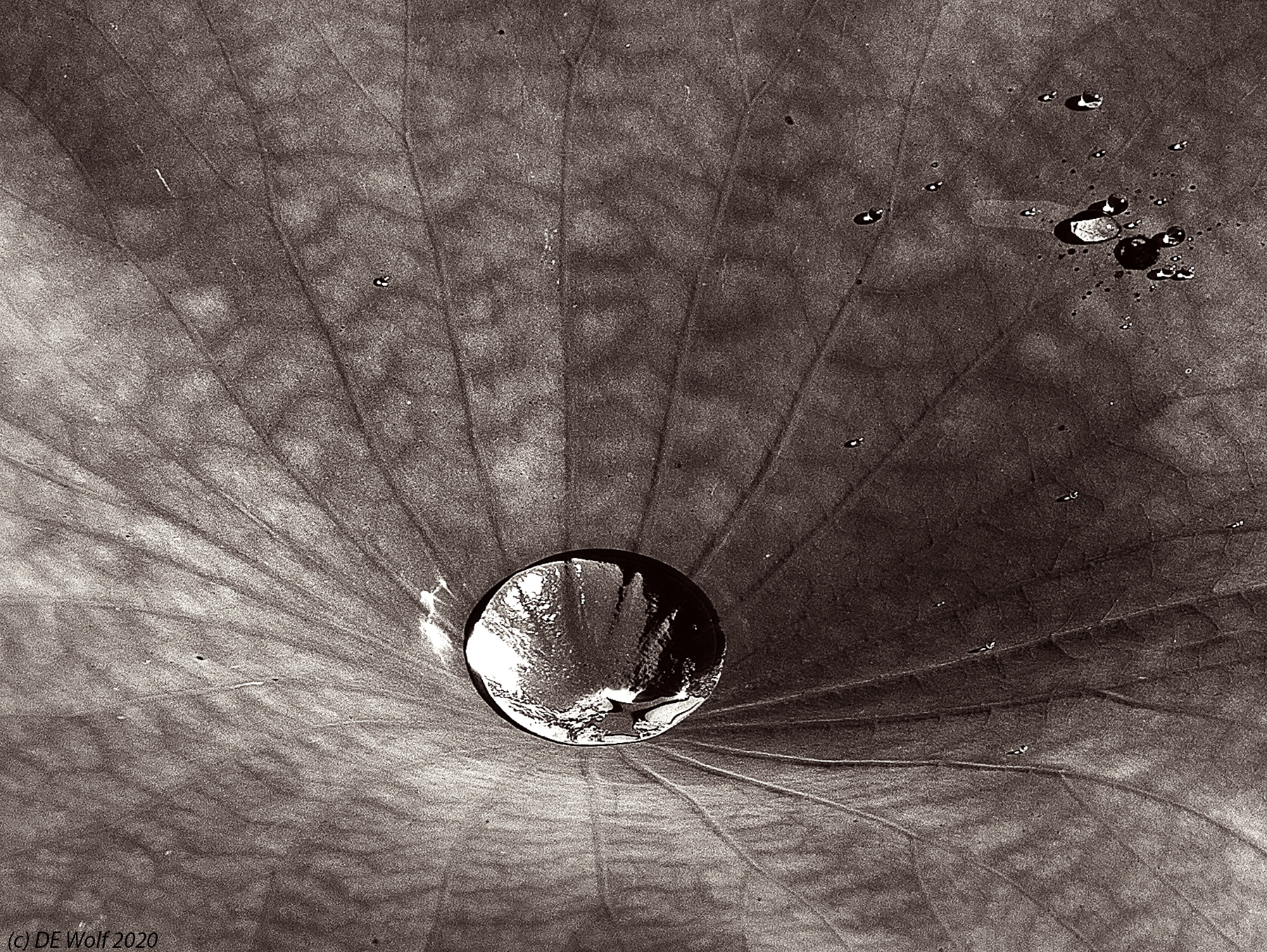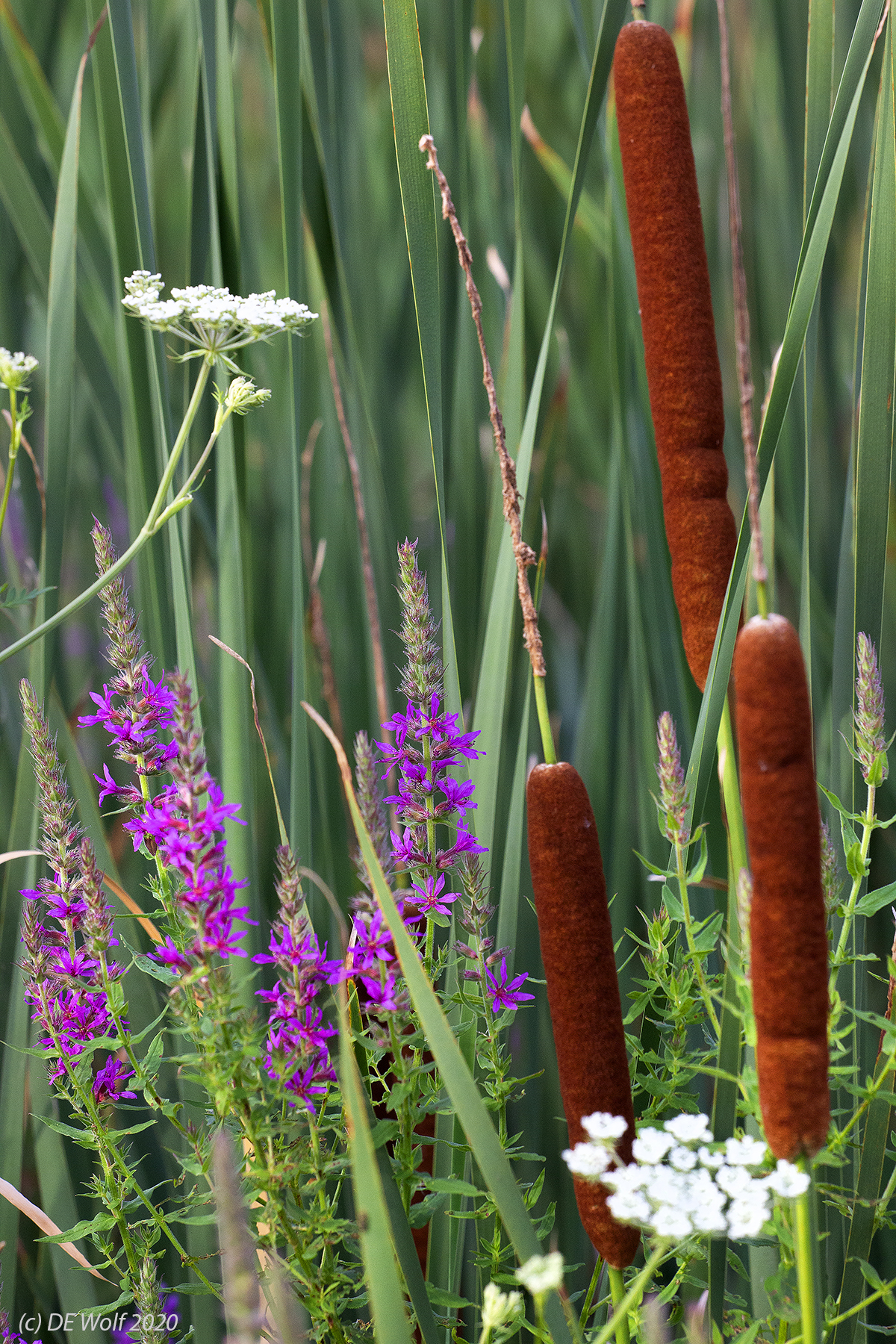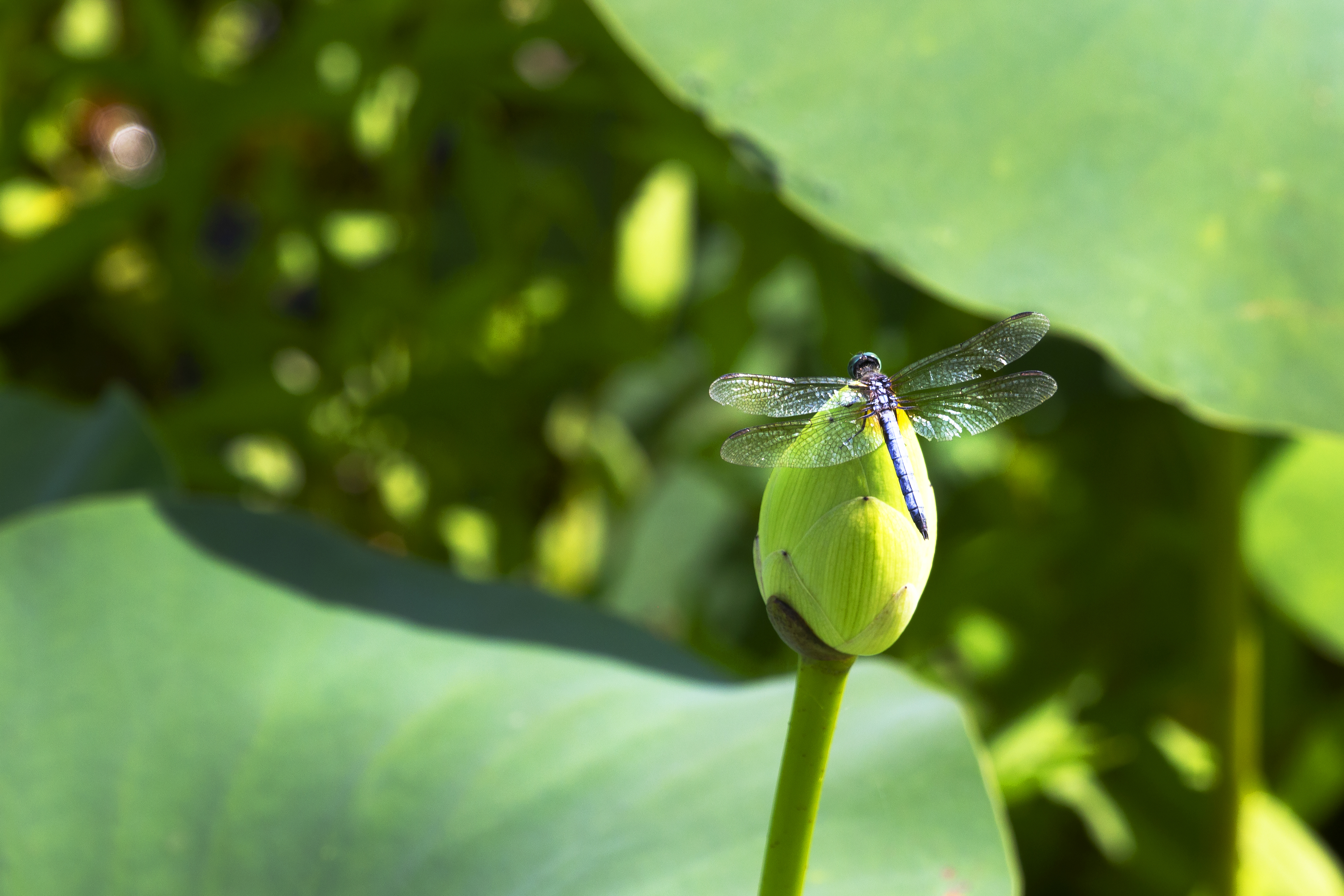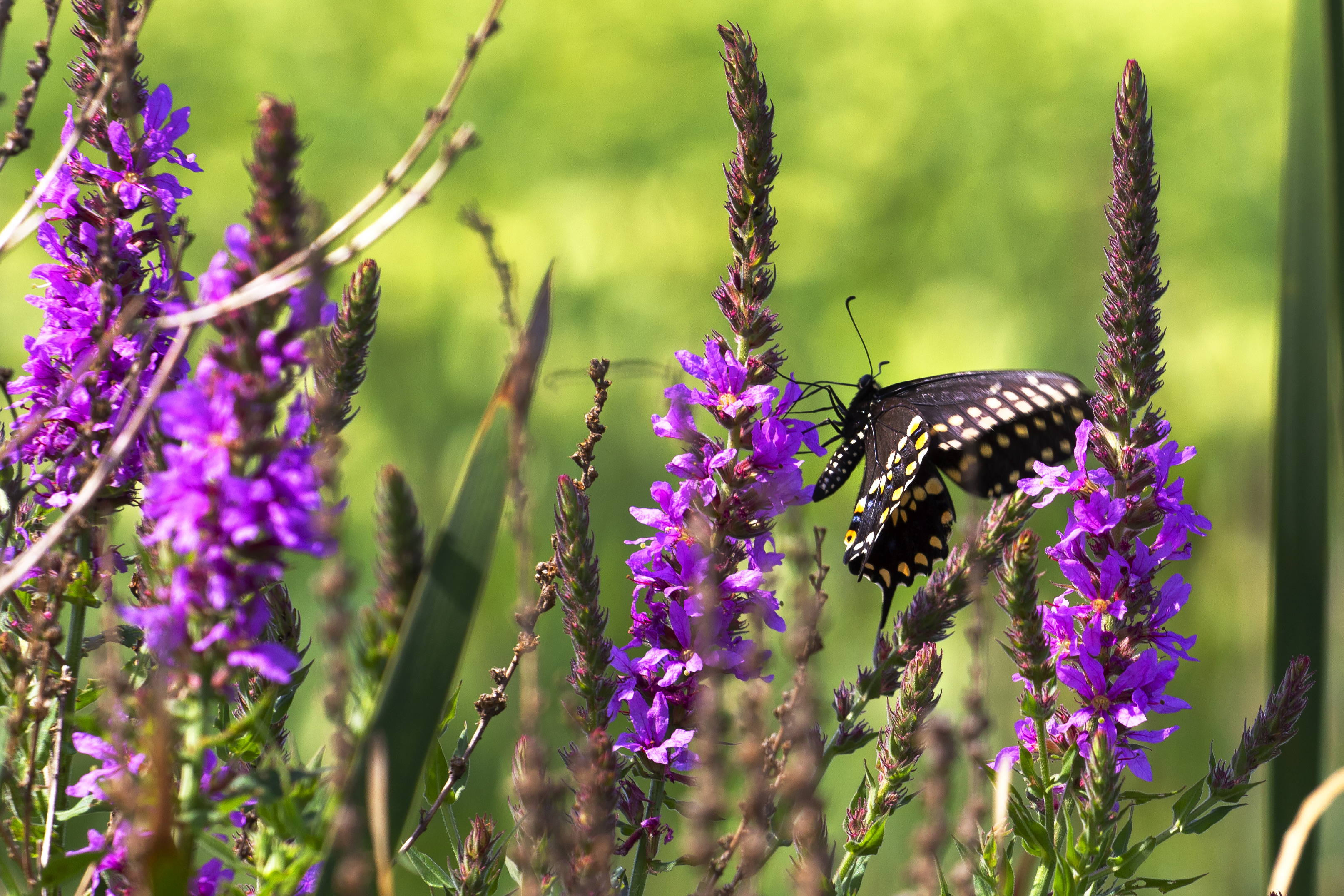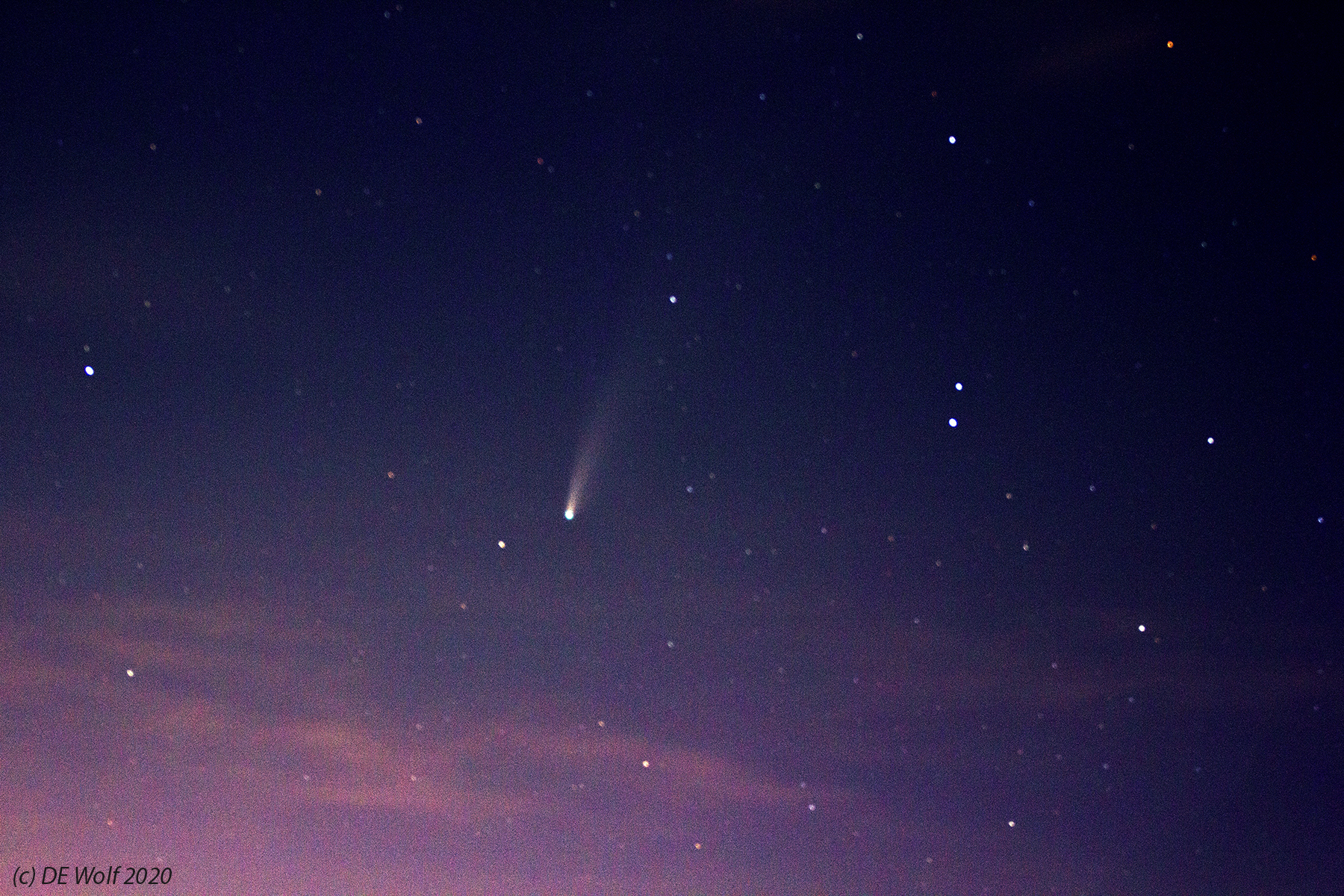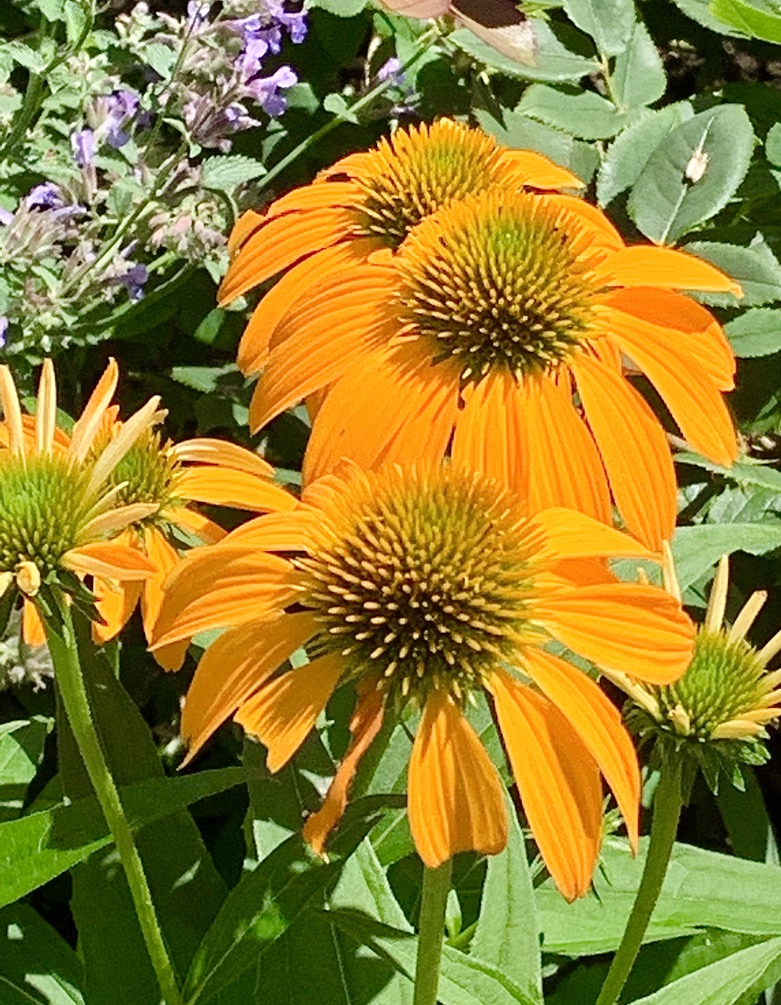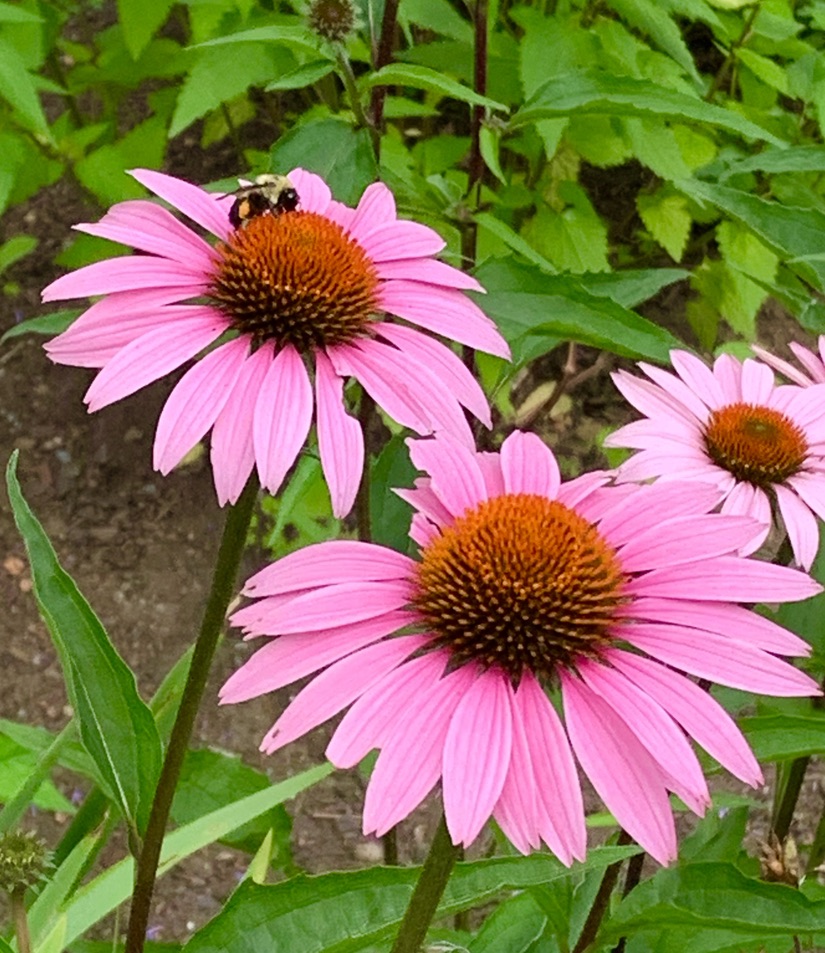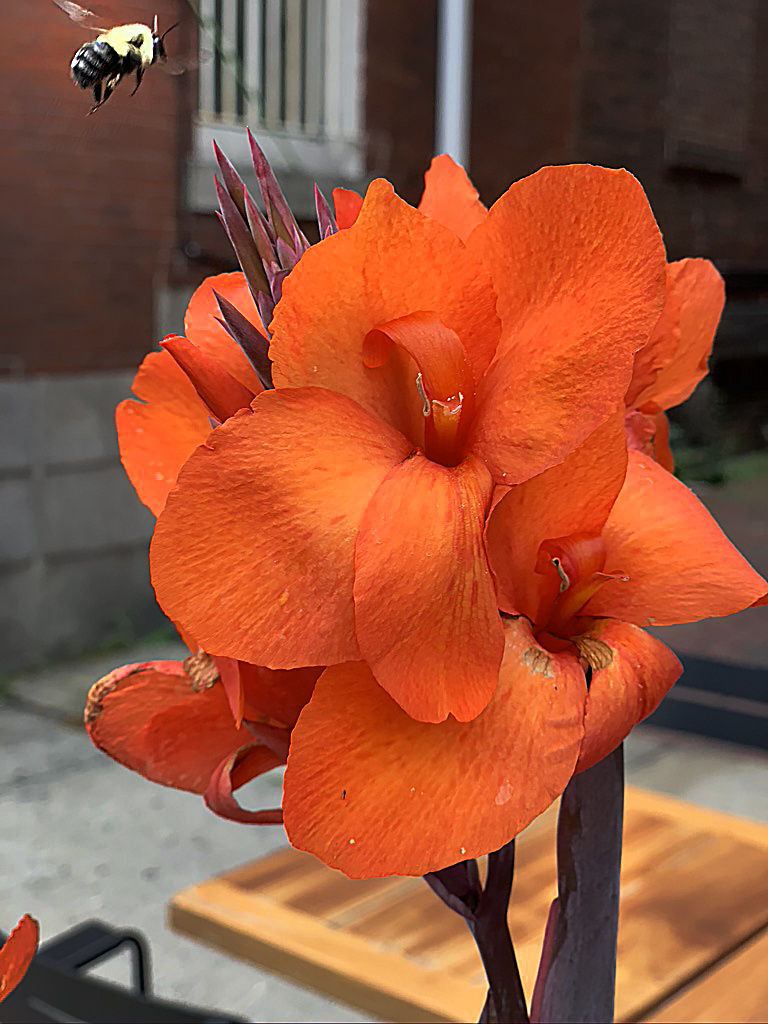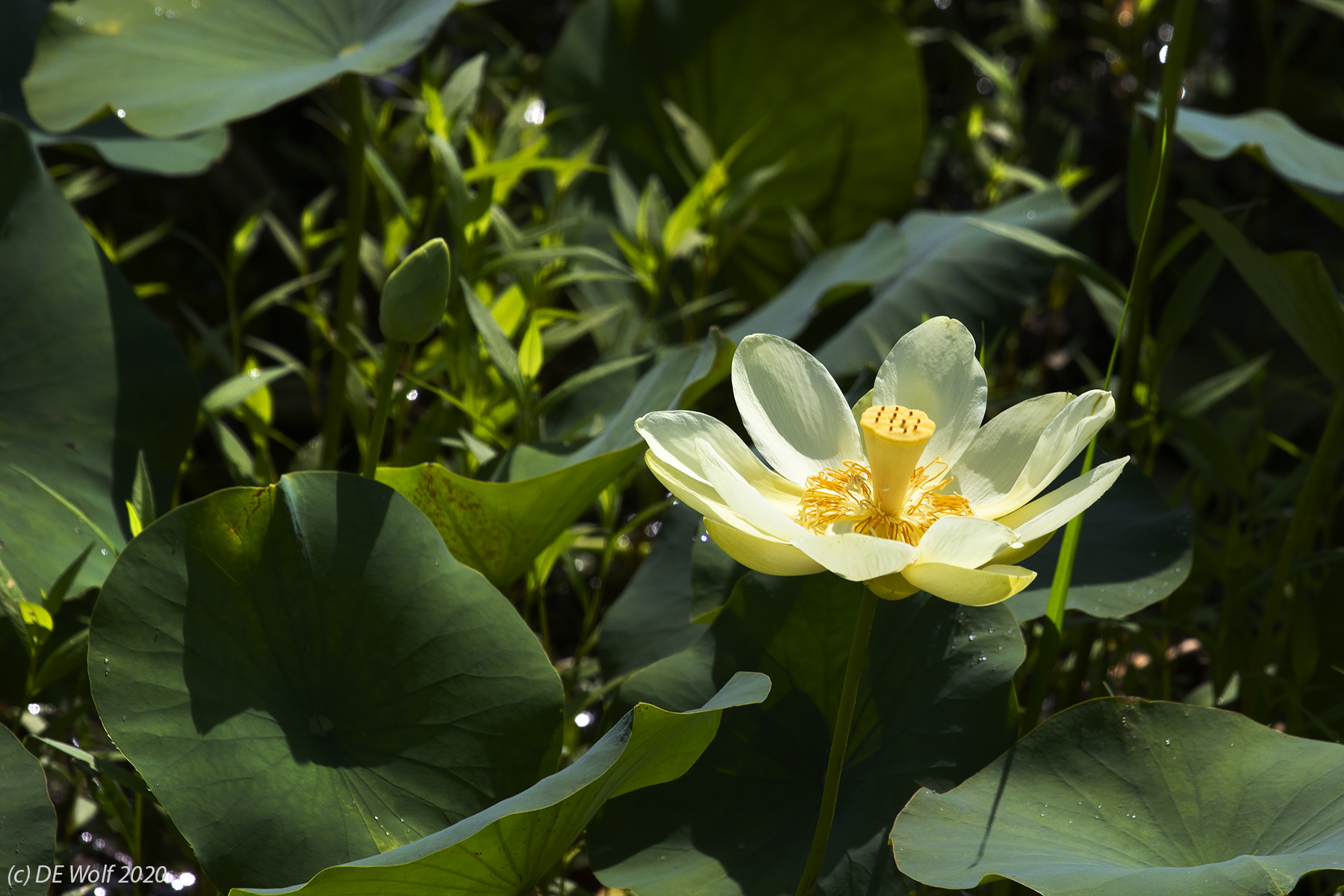
Figure 1 – American Yellow Lotus, Great Meadows National Wildlife Refuge , Concord, MA, July 2020. (c) DE Wolf 2020.
And finally in Figure 1, we have the lotus flower itself – The North American or Yellow Lotus (Nelumbo lutea). The lotus is such a beautiful flower; so delicate and complex in structure. It brings such beauty to our world.
The mythic symbolism, particularly in Buddhism and Hinduism arguably evolves from the fact that the lotus grows in the most fetid of ponds and serves to purify the water. Both Vishnu and Lakshmi are often portrayed standing on and holding a lotus blossom. This image is repeated in the west by the birth of Venus on the half shell. Venus stands in the half shell as perfect in beauty as a pearl. The profoundest of myths of the lotus is that of Lord Brahma sitting in the lotus flower that grows from the navel of the sleeping Lord Vishnu. Each morning the lotus flower opens and each night it closes. These symbolize the eternal pattern of birth, death, and resurrection. Each cycle of opening and closing represents a life in the journey.
The western parallel is equally profound and equally focuses on the trinity of birth, death, and resurrection. In the great Cathedral at Chartres, we find the famous Jesse window. This stained-glass triumph of medieval art shows a supine Jesse out of whose loins grows the ancestral tree of David to Mary to the Christ.
“Et egredietur virga de radice Iesse et flos de radice eius ascendet.”
“And there shall come forth a rod out of the stem of Jesse, and a branch shall grow out of his roots”
Isaiah 11.1
To see a lotus blossom, especially as I did on this summer’s day surrounded by thousands of lotus flowers, each of equal beauty, one can not help but realize that it is much more than a flower. It is symbolic of everything and every time.
“Everything turns in circles and spirals with the cosmic heart until infinity. Everything has a vibration that spirals inward or outward — and everything turns together in the same direction at the same time. This vibration keeps going: it becomes born and expands or closes and destructs — only to repeat the cycle again in opposite current. Like a lotus, it opens or closes, dies and is born again. Such is also the story of the sun and moon, of me and you. Nothing truly dies. All energy simply transforms.”
― Rise Up and Salute the Sun: The Writings of Suzy Kassem
Canon T2i with EF70-200 mm lens at 200 mm, ISO 200, Aperture priority AE Mode 1/640th sec at f/7.1 with no exposure compensation.

